By Vincent Delforge, special to KickinTheTires.net
NASCAR has been doing well since its inception in 1947 and especially since its first official championship in 1949. The only problem for Bill France Sr is that NASCAR, which he wanted to be national, only focused on the South, Southeast and a little bit of the North and Northeast of the country. On rare occasions NASCAR organized one or two races in the West, with the exception being the NASCAR Short Track Division since 1951.
The United States of America is big and NASCAR’s roots lie between the Charlotte, N.C. area and Daytona Beach, FL. At the time, it is very expensive to make long trips in the West of the country to an audience that is not necessarily a fan of stock car racing with NASCAR sauce.
The idea germinates in the head of ‘Big Bill’ to create a division of NASCAR competing only in the West (from the Northwest to the Southwest of the country). For this he would take over the rules of the Grand National, Division 1 of NASCAR, and create a new championship.
To achieve his ends, during the winter of 1953-54, Bill France will start discussions with Bob Barkhimer, a very famous Californian motor racing promoter. The two men will imagine the bases of what will become in 1954 the NASCAR Pacific Coast Late Model Series. Bill France is a visionary and partnering with Barkhimer is the best way to grow NASCAR on the West Coast.
History of the West Series, 1954-1970
1954-1955 NASCAR Pacific Coast Late Model
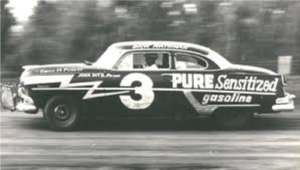
On March 28, 1954, the first race took place at Oakland Stadium, which was known as “The Oakland Wall”. If Hershel McGriff gets the first pole position, Dick Rathman was the first to put his name on the winners list. This is where we can once again see the genius of Bill France and Bob Barkhimer. For the race to have national recognition, it counts for both the PCLM and the Grand National. Which means that in addition to the local stars, there are also few NASCAR stars like Rathman or Lee Petty who made the trip.

This “combination race” system will be one of the keys to success with the same cars and the same rules. These common races count for the national championship of the Grand National but moreover a clean classification in terms of points is allotted to the only pilots of the Pacific Coast Late Model Series.
The 1954 season will include nine races, all on dirt track, including three “combination races”. The final being disputed on October 10 on the Capitol Speedway in Sacramento, California saw the victory of Allen Adkins. Note that during this race began FiFi Scott McGillicuddy, the first woman to have competed in a race in this division. It is Lloyd Dane who will be crowned champion without having won a single race with 238 points ahead of Danny Letner and his 2 victories. He will catch up later.
In 1955 Danny Letner took his revenge and won the title at the end of the 11 events scheduled on the calendar, including the first road race in history at Lancaster won by Chuck Stevenson.
1956 NASCAR Pacific Coast Late Model Division
But given the success, Barkhimer sees things big and the championship is growing rapidly. The term “Division” is added to the name. After remaining localized the first year in California, this second season sees tracks appear in Arizona and Nevada. The states of Oregon and Washington will swell the ranks in the 1956 season. It was in Phoenix, Arizona that the first race on a paved oval won by Jim Reed took place. With 32 races, it remains the season with the most races. Lloyd Dane dominated the 1956 season with five wins, 19 top-fives and 26 top-10s!
1957-1958 NASCAR West Coast Late Model
The name “Pacific Coast” having somewhat lost its rationale as the series had extended further inland, was replaced for the first time by the word “West”. But the series will experience a shortness of breath from the following season. The promoters are fewer and the bonuses offered to the winners are reduced. The number of races on the calendar decreased to 24 in 1957, then nine in 1958 and only seven in 1959. The West of the country was very attached to evening races on short tracks ranging from quarter-mile to 3/8-mile. Since 1951 the NASCAR Short Track Division has been very popular and overshadowed the PCLM in the late 1950s.
1959-1969 NASCAR Pacific Coast Late Model
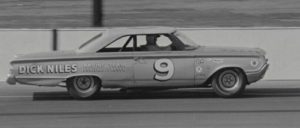
But the disappearance of this championship at the end of the 1959 season will encourage promoters, owners and star drivers like Marvin Porter or Parnelli Jones to find refuge in the PCLM. Because yes, NASCAR has decided to return to the original name of the series. At the dawn of the 1960s, this gave renewed interest in this championship. The number of races will be between 10 and 20 per season. With the exception of the 1964 season with its 29 races.
The physiognomy of the calendar changes with many more short race distance and races on tracks of less than half a mile. This prompted Bill France to take the decision in 1963 to slightly change the rules concerning “combination races” by no longer attributing statistics to PCLM drivers in the Grand National only to the winner and the poleman in the overall race. Moreover until 1968, many victories during these combination races will be won by West pilots like Dan Gurney or Parnelli Jones.
From 1968, the season will begin on the road circuit of Riverside, Calif. by bringing together the Grand National and the PCLM. A tradition that would end in 1981 when the Daytona 500 became the season opener in the NASCAR Winston Cup Series.
After having been runner-up three times consecutively between 1966 and 1968, Ray Elder finally obtained the coronation in 1969 at the end of a rich season of 20 races, four of which were with the Grand National.
1970 (races No. 1-9) NASCAR Pacific Coast Late Model – 1970 (races No. 10-19) NASCAR Grand National West Division
Rare thing in NASCAR, but the West Series has always been an exception, the series changes its name during the season because the term “Pacific Coast” is no longer really relevant. It’s been a long time since the series no longer only runs along the West Coast of the USA. 1970 even saw the arrival of a race in Canada.
It was also that year that NASCAR invented the “W” system for the combination races, that is to say, to place a W after the car number to distinguish the drivers of the West from those of the Grand National. That allowed it to be possible to have for example two No. 96s in the same race with a No. 96 and a No. 96W. However, this is not an obligation because if a West number is not used by a Grand National competitor there is no reason to give it a “W”. In addition, some years the “W” will be automatically indicated on the classification sheet whether or not it has been affixed to the bodywork. Other years it will be the opposite. Ah NASCAR, it has always liked to complicate its life and that is also why we love it!
Ray Elder wins his second consecutive title. He who will soon be nicknamed the “King of the West” because of his resemblance not physical but in terms of results on the track with the great Richard Petty said The King. Elder will win six championships. His great rival Jack McCoy, meanwhile, won the most races in history with 54. These two drivers largely dominated the West Series between 1965 and 1975.
During the year Winston, the cigarette brand that is part of the R.J. Reynolds Tobacco Company group, begins its entry into the discipline as it will do in the Grand National in 1971. It is a test to see if this boosts sales in the regions where the championship takes place. And it’s obviously a success because…
History of the West Series, 1971-2003
NASCAR Winston West Series 1971-2003
… from 1971 the championship “officially takes” the name of NASCAR Winston West Series in the media.. while NASCAR officially prefers in its statistics the successive names of NASCAR Western Grand National Division in 1971 and NASCAR Grand National West Division in 1972 and 1973. The name of the tobacco company Winston not appearing 100% officially until 1974 with NASCAR Winston West Grand National. But today it has become more convenient to give this name for the whole period 1971 to 2003. Because there have been some variations over the years with:
1971 NASCAR Western Grand National Division
1972-1973 NASCAR Grand National West Division
1974-1984 NASCAR Winston West Grand National
1985-1993 NASCAR Winston West Series
1994 NASCAR Winston Transcontinental Series
1995-1997 NASCAR Winston West Series
1998-2002 Winston West Series, NASCAR Touring
2003 NASCAR Winston West Series, Grand National Division
As I have already written, nothing is ever simple in NASCAR!
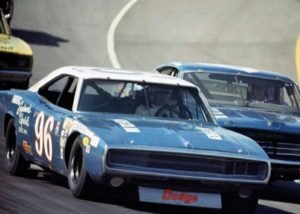
Ray Elder continued his momentum and won two new titles (1971 and 1972) by winning the Riverside race twice against the stars of the Grand National. It was Elder who was the last West rider to win combination races between the PCLM and the Cup in 1971 and 1972. All the others until 1997 in Sonoma, CA were won by Cup drivers. .
In 1971, the title of Rookie of the Year was officially established, which was won by Dick Kranzler. That year Ray Elder won his third consecutive championship. He is the first to achieve this performance. The combination race at Ontario Motor Speedway made history with 113 drivers entered for “only” 51 starting grid positions. Yes, 62 DNQs!
For Elder, with the 1972 championship, that now makes him four consecutive titles. And it’s not over because he will do it again in 1974 and 1975 without forgetting his third position in 1973. Between 1966 and 1975 he will have been six times champion, three times second and once third!! Who says better? Even ‘The King’ Richard Petty will not have reached this average. It is also true that the championship is less competitive than that of the national division. But the feat remains to be highlighted.
In 1974 there are 28 races but curiously the three “combination races” do not award points for the West Series classification.
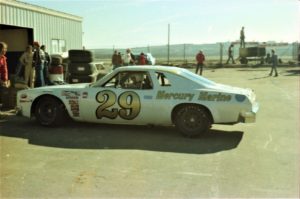
The first visit to the new Phoenix International Raceway was in 1977 and it was Cale Yarborough who won his only career victory in West. The Cup drivers are taking advantage of a free weekend taking place near the Division 1 final to come and grab some bonuses. Richard Petty would win this race in 1978, 1980 and 1981, his only three victories in the series.
Canadian Roy Smith will dominate the early 80s by winning the championship consecutively between 1980 and 1982. At the same time becoming the first non-American driver to win the championship.
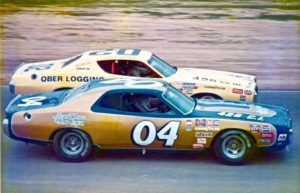
Jim Robinson will impose his law for the next three years before leaving the crown to Hershel McGriff in 1986, his only career. A season of only eight races including six on road tracks! At 58, he becomes the oldest champion in the West Series. A record that still stands. McGriff will also be elected the most popular driver twelve times consecutively between 1981 and 1992, another record!
During this period, a pilot will achieve great things, it is Derrike Cope. Rookie of the Year in 1984, his real moment of glory came when he won the Daytona 500 in 1990.
Dale Earnhardt, Sr. won his only career victory on June 23, 1985 in a hard-fought race at the road track in Kent, WA. It This circuit of 2.25 miles with 10 corners having a singular particularity with a “kink” in the frontstretch.
At this time, the races are still long and some have a prestige that attracts Cup stars. This is the case of the Evergreen Speedway race, at Monroe, WA, which was won in 1987 by Bill Elliott.
In 1992 a “combination race” mixes the cars of the West Series with those of the ARCA REMAX (current national series of the ARCA Menards Series). It is very rare in history for NASCAR to mix its series with competing sanctioning bodies. You have to go back to 1973 and 1974 to see the Winston Cup mixed with the USAC Stock Car race at Pocono. Two races won by NASCAR drivers. To see this type of race, the rules must be the same. In the 1970s, to attract national stars, the USAC (United States Auto Club) adopted the same rules of the Winston Cup.
Today it’s the turn of Division 1 of the ARCA (Auto Racing Club of America) to do the same by recycling old Cup chassis and engines in the hope of giving a boost to a series a bit moribund for a few years. It was on September 20, 1992 that the West Series / ARCA meeting took place at the Texas World Speedway. The race is called the Texas Shootout and Mickey Gibbs wins on a track he knows well. As he is an ARCA driver, his victory is not counted in the West Series stats. John Krebs the best West driver finished fourth.
On June 13 in Shasta, a driver made his debut in the utmost discretion. This is Bill McAnally. His team, Bill McAnally Racing, would eventually become the winningest team in the history of the West Series. And this is still the case in 2022! That race was won by Bill Sedgwick, who today is the crew chief of Jake Drew, the current 2022 championship leader.
For many, the West Series is their life and they hold different positions, from mechanic to owner, from driver to crew chief and so on, for sometimes more than half a century!
The following year, on March 21, 1993, the second edition of the Texas Shootout took place, which would also be the last “combination race” between the West and the ARCA. This time it’s a driver from the West who wins with Ken Schrader at the wheel in front of Darrell Waltrip. NASCAR took care to bring in Cup stars to be sure of winning. This will be the last confrontation between the two federations.
At that time, no one imagined that 27 years later, ARCA would become an integral part of NASCAR and the West Series would become an ARCA-badged series.
Also in 1993 there are two combined races between the Winston Cup and the West. It’s happening in Sonoma and Phoenix. But it is becoming harder and harder for the drivers of the West to qualify in the face of the hyper professionalism and the substantial budgets of the Cup teams. Fortunately, Rick Carelli finished 3rd at Mesa Marin in the penultimate race of the year and obtained the title at that time because he failed to qualify for the final in Phoenix which united the two series. Fortunately, the drivers of the West who do not qualify still received points for their championship.
1994 was the pinnacle for NASCAR with the introduction of a long-awaited race at the Indianapolis Motor Speedway. This race brings together the Winston Cup and the Winston West. Once again, hard for the West drivers, because only Mike Chase manages to qualify. In Sonoma it is the same, the West drivers suffer. In Phoenix on October 30 it is even a disaster because few drivers from the West competed because they are almost sure to DNQ, especially with the system of provisional places, which offers eight to Cup drivers.
Faced with this desertion, the officials of the West decided not to take it into account for the attribution of points in the championship and called this race a “combination event” and will organize on November 27 a new “finale” in Tucson just for the West drivers. Ron Hornaday Jr wins the race and Mike Chase the title.
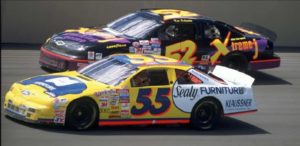
This is why between 1995 and 1997, NASCAR will establish a provisional place reserved for the best driver in the West, thus ensuring the presence of at least one driver from the series during the combination races. The 1997 Sonoma race would be the very last in history to combine the Cup and the West. It is won by a Cup Series driver. Note that between 1973 and 1997, all combination races between the two series were won by a Cup driver.
The 1996 finale took place at a brand new track, the Las Vegas Motor Speedway in Nevada. It’s the first race of a NASCAR championship here and it’s a test to include the national series in the future. Ken Schrader wins the race. Following an accident during the previous race in Phoenix, Jeff Krogh, the championship leader, cannot participate in the final. Lance Hooper, who was 100 points behind before the final, managed to turn the situation around and won the championship.
At the end of the year, NASCAR is exported to Japan at Suzuka for an exhibition race and a panel of drivers from the West is invited to come and compete against those of the Cup. This will be the case again in 1997 then in 1998 on the Twin Ring Motegi oval.
The end of the 1990s was also marked by the growing reduction in the workforce. It is becoming difficult to have the average of 20 cars per race… NASCAR began a research and reflection phase, which lasted several years, with an aim to find solutions to reduce costs. The West teams recycled Cup Series chassis and engines. But these are getting more and more expensive.
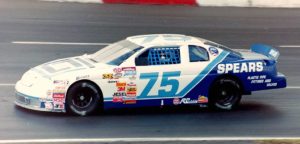
In 1998, Kevin Harvick won the title. That year NASCAR invented a new system which is still used today in West, East and Canadian Series. It is to only allow a certain number of cars at the start, not depending on the size of the race track. In this way a grid of 20 cars is “normal.” The only problem was that 1998 was a prosperous year for the West and at each race there were many who did not qualify, such as for the final in Las Vegas, for example, where there were eight who did not qualify, while there 40 positions on the starting grid.
Reduce costs? Not sure since the year 1999 goes down in history in NASCAR. Why? Because for the first time, a race counting for a championship is disputed outside the American continent. The Cup Series teams no longer want to go for an exhibition race in Japan for so little media coverage. So to honor the two-year contract signed with the promoter, NASCAR sent the West Series for their final on the Motegi oval. Kevin Richards wins the race where 30 drivers took the start including three Japanese. Despite his second place Austin Cameron failed in the championship against Sean Woodside (fifth in the race). The race will obviously not be reinstated on the calendar for the 2000 season.
2002 will be the last season using the Winston Cup technical regulations. For 2003 it will be adapted to be similar, but not totally identical, with the Busch North Series (current ARCA Menards East Series). 105 inch (East) and 110 inch (West) frames can now participate in both series. There is also the introduction of composite fiber body parts, for example. That year, Eric Norris became champion. Eric being the son of film and television star Chuck Norris and Dianne Holecheck.
But, everything has an end. In 2003 Winston announced its withdrawal from competition as the main sponsor of the Winston Cup Series but of course also of the Winston West Series. If for the national division we quickly know the name of the successor, namely the telecommunications firm Nextel, it is not the same for the West. Scott Lynch will remain the last champion under the Winston era.
History of the West Series, 2004-Present
2004-2005 NASCAR West Series, Grand National Division
Without a title sponsor, the West Series continued in 2004. A hard blow for this division. Despite everything, the calendar remains stable and has 13 events, even one more than the previous season. Mike Duncan is crowned champion. David Gilliland won Rookie of the Year honors. But without a main sponsor the situation becomes more complicated. In December at the awards banquet, NASCAR executives do not yet have any good news to announce.
It is therefore again without a title sponsor that Mike Duncan wins his second championship in a row. Sarah Fisher is voted the most popular driver of the year in 2005, it is the first time that a woman receives this award in this series.
2006 NASCAR AutoZone West Series, Grand National Division
Glimmer of hope in 2006 for NASCAR executives. AutoZone became title sponsor. The contract covered three seasons but was expensive and the firm has seen too much big. They ended the contract at the end of the 2006 season. Eric Holmes obtains his first championship. He will become one of the flagship drivers of the series for ten years. In total he will be crowned champion three times.
On November 14, NASCAR finally completed its long reflection started in 1997. George Silbermann, Director of Racing Operation, announces that for 2007, NASCAR has designed identical technical regulations for the West and East Series. Thanks to this, the transition from one series to another is possible during the season. What many drivers will not hesitate to do. In addition, it reinstates the idea of “combination races” which it calls “Interleague” in the press release. A term that will soon be abandoned. It also introduces Spec Engines, Composite Bodies and much more. All this with the aim of reducing costs. The minimum age to drive was lowered to 16.
2007 NASCAR West Series, Grand National Division
Again a season without a title sponsor but the situation is under control with the new technical rules. Mike Duncan wins his third title in four years. This season also marks the final disappearance of ovals longer than a mile.
The total settlement correspondence between the West and the East goes further in this year 2007 with the introduction of the two combination races in Elko and Iowa attracting a lot of drivers. The best representative of each series is credited with a victory in his series, regardless of his position at the finish. Because if the drivers participate in the same race, the allocation of points makes the distinction between the drivers of the two series.
More good news arrives on December 16, 2007, when Camping World announces that it becomes the title sponsor of the series and this will be effective from the 2008 season. This sponsor is also the title sponsor for the two regional series since it will be also that of the East Series.
2008-2009 NASCAR Camping World West Series
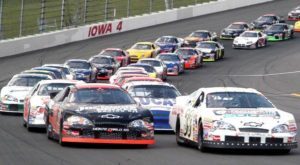
The 2008 season is a great success on the tracks in the image of its “Combination race” at Iowa Speedway was a huge success with 54 drivers from both series entered for 44 places on the starting grid. The success is total since even a star of the NASCAR Sprint Cup Series, Kasey Kahne, comes to measure up to the “regional” drivers. It was Brian Ickler of the East who won while Jim Inglebright, the best representative of the West finished in ninth position.
Eric Holmes wins his second championship. However, there is a kind of malaise that sets in during the 2008 and 2009 seasons. The lack of recognition and media coverage of the East and West series. NASCAR hoped to attract young drivers but yet the average age of drivers continues to rise. The Cup teams like Richard Childress Racing, Joe Gibbs Racing or Dale Earnhardt Incorporated have their junior team engaged or in partnership with certain teams already present. But the observation is there, the sponsors are rare on the cars. Young drivers are not bankable enough and many will never make it to one of the national series despite their talent.
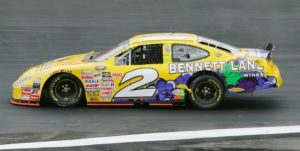
2010-2019 NASCAR K&N Pro Series West
A new era began in 2010 with the arrival of K&N as title sponsor. The firm will invest in the promotion of the two West and East series. The development of media on the internet will also offer the possibility of races being broadcast throughout the world. This will have the effect of seeing more and more foreign drivers come and try out NASCAR.
A team will make a remarkable arrival, it is Gene Price Motorsports which will come to interfere in the duo Bruncati Racing – Bill McAnally Racing. The team will make a brief passage between 2008 and 2014 winning three titles with Greg Pursley (2011 & 2014) and Dylan Kwasniewski (2012).
In 2011 NASCAR also announced that the minimum age to drive in the K&N Series was lowered to 15 years. This time it will give the series a real facelift! The proof in 2015 with Todd Gilliland who won the victory at the age of 15 in his very first career race! Since then the vast majority of races have been won by drivers under the age of 20.
On November 4, 2014 at the SEMA Show in Las Vegas, NASCAR president Mike Helton unveiled a new body style for the K&N Pro Series based on the then-Sprint Cup Series Gen 6 models. The new body, developed with Five Star Race Car Bodies, is constructed of a composite laminate blend and designed with easily replaceable body panels, expected to shrink the costs of fabrication dramatically.
Todd Gilliland will win the championship in 2016 and 2017. Derek Thorn obtains the grail in 2018. This year is marked by the first pole and the first victory obtained by a female driver, Hailie Deegan.
Derek Kraus will forever be the last driver to win the championship under the NASCAR banner in 2019.
2020-present ARCA Menards Series West
ARCA Menards what? Remember, on April 27, 2018, NASCAR acquired ARCA. If almost nothing had changed until the end of the 2019 season in the different series offered by the two entities, it’s not the same from this year 2020. NASCAR having “switched” under the name ARCA its two main Regional Touring Series namely the K&N Pro Series West and East.
In fact, nothing changes for 2020 in terms of the rules. Only the bonuses offered to the drivers are decreasing and are no longer paid after each race as in NASCAR but at the end of the season according to the ARCA system. This greatly complicates the life of very small teams who relied heavily on this money to be able to exist from one race to another.
The first calendar announced included 10 races but one thing will disrupt the course of the championship and the entire planet for that matter. The Covid-19 pandemic will force the ARCA to significantly modify its calendar, establishing a strict protocol in terms of sanitary measures and races without spectators… Despite all these constraints, a young driver will reveal himself, it is Jesse Love. He will become the youngest champion in the history of the Serie at barely 15 years old.
He defended his title in 2021 and be champion again in an incredible final. He was tied in points with Jake Drew. The difference being made in the number of victories in favor of Love. It is also the return of a combination race between the West and the ARCA Menards national series in Phoenix at the start of the season. A year where the COVID measures will be gradually eased, allowing the return of spectators.
And we come to 2022 for the 69th season of the West Series. This year is marked by the mastery of Jake Drew who has just won the last three races. Becoming at the same time in Portland the 200th different winner since the creation of the series in 1954. The history of the series is being written and will continue to be written in the future. Because this year, there are more cars on the starting grids, the pandemic is over and business has resumed. We eagerly await the sequel.
Featured Photo Credit: Photo by Sal Sigala, Jr. via Vincent Delforge.
I find it very puzzling as to ARCA’s purpose being anything but sacrificial….NASCAR’s ownership of ARCA has not created a healthy environment for the series. Fields are small, TV coverage is on the larger networks only intermittently. Races are often run at times when no one would watch live, meaning delayed & even edited video, small(er) or NO at-track crowds when racing on the larger NASCAR tracks, and definitely smaller starting fields. The branding of OEM’s is easy enough to see on the exterior of the cars, though rarely mentioned in a broadcast – considering engine rules have the competitors using a “spec” engine, most commonly known as the ARCA Ilmor 396 (not sure about East & West series) – a GM LSx EFI engine intended to control costs. There’s a distinct disinterest in this series, which makes me wonder whether NASCAR purchased it to eventually shut down the ARCA brand. The ARCA TV package generally is carried by a smaller cable network, limiting exposure opportunities for any involved – racers, advertisers, etc., with earning potential to truly make a living limited to a few large, better-funded teams that end up winning a fairly high percentage of the races. And then you find “silver spoon” teams with driver & car support from a larger NASCAR team. I wish the negatives weren’t so significant, and it’s not clear whether there’s a path that can bring it to a better place.